► Hans Mezger
► 1929 – 2020
► One of Porsche’s greatest engineers
Hans Mezger, one of Porsche’s most important engineers has died at the age of 90. Responsible for a sizable chunk of the brand’s motorsport success, Mezger perfected the flat six, fathered the 917, and even built one of McLaren’s most successful F1 engines. In total he gave 37 years to Porsche.
We’ve dug through the archives to find this interview with the great man himself. Originally from March 2012 it covers the multiple highlights of his career, and shows the enormous mark he made – not just at Porsche, but on motorsport in general
An interview with Hans Mezger
‘Porsche was my first company, and my last one. All my time as an engineer was at Porsche, from 1956 until the end of 1993.’ Hans Mezger’s four-decade career didn’t stutter along either: he perfected the original 911’s flat six, the iconic 917 racer is his baby, and he designed the TAG-badged Formula One engine that brought McLaren five world titles. Or to put it another way, when I meet the diminutive, softly spoken, 82-year-old Mezger in the workshop beneath the Porsche museum, it’s with the knowledge that three-quarters of the race cars on display above us – plus numerous road cars – were designed, built or influenced by him.
A 2015 interview with Niki Lauda
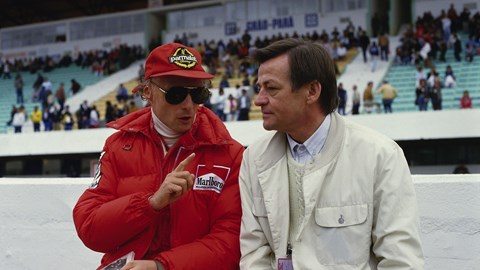
Beginnings
After studying mechanical engineering at Stuttgart university, Mezger joined Porsche on 1 October 1956. These were the early days and Mezger’s arrival in the Technical Calculations department ballooned its number to three. He worked on the ‘Fuhrmann’ engine for Formula Two and the 1.5-litre flat eight for the Type 804 Formula One car, and when that project was stopped he was given responsibility for all Porsche’s race engines. And asked to develop a new flat six…
Porsche originally designed its new six-cylinder engine with pushrods like the 356’s flat four, but switched to overhead cams as Mezger and Ferdinand Piech (nephew of Ferry Porsche, later father of the Bugatti Veyron) joined the team. They re-engineered it for a dry sump. ‘The 356 had a lot of problems in cornering with the wet sump – we did not want the same problems for the future of Porsche’s sports cars. Many of the ideas used for the 911 engine we learnt in racing.’
As if on cue the technicians in the glass-fronted workshop that greets visitors in the foyer of the museum start to fire up the pack of silver 911s around us. Every generation is present – they’ve been prepped here, and today are being sent to join the new 991 on some far-flung motor show stand – and although each sounds different, all bark awake and then idle noisily with that distinctive raw thrum. It’s Mezger’s music.
Racing pedigree
Having proved himself, Mezger was put in charge of the new Konstruction Rennfahrzeuge to design and build all Porsche’s future race cars. His first project was a competitor for the European Hillclimb Championship, but before recounting the story Mezger pauses to apologise. He shamefully admits he can’t remember when work began: it was either 5 or 6 August, in 1965! ‘We started with designing the tubular frame, and when our drawings were finished, three shifts worked 24 hours a day to build the chassis. It was designed and built in 20 or 23 days. It didn’t win its first race, but it won the one after.’
The Ollon-Villars hillclimb car was a one-off but the chassis influenced the 907 and 908. And the legendary 917. There’s one with us in the tiled workshop, and despite the legion of 911s, an RS Spider LMP2 prototype, one of only two 968 estates, and all manner of famous race cars in the courtyard outside, both Mezger and I gravitate towards the old Gulf-liveried coupe that sits lopsided with a puncture.
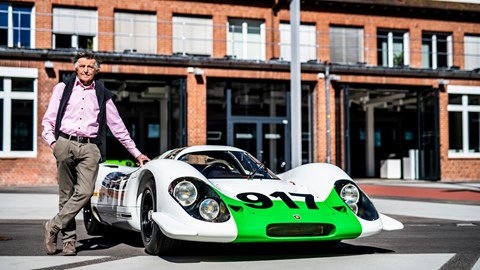
The 908
Porsche originally built the 3.0-litre 908 after it deemed the FIA’s requirement for a run of 5.0-litre sports cars too demanding, but then the rules changed in the spring of ’68 and just half that number were needed. Not waiting for Porsche to make a decision on whether it would build a car to the revised regulations, Mezger started work on a new engine. ‘We suffered from torsional vibrations on our eight-cylinder engines, and I knew we couldn’t just make the crankshaft longer – I knew it would have to be new. The 12-cylinder had so many advantages in its design: even firing order, 100% balance of the inertia forces. The drivers were not used to the power,’ he laughs, gesturing to the engine poking through the 917’s rear deck.
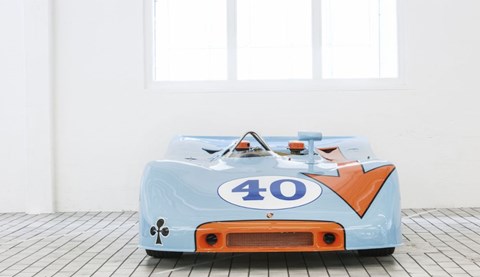
Getting the 917 done
Every race fan knows the next part of the story. The FIA insisted on inspecting all 25 cars, so Porsche built 25 cars and lined them up outside Werk 1, its pre-war test and development HQ. All 25 had race-spec engines and transmission, but driveshafts were pinched from elsewhere so each 917 could be driven a few yards. There was little time left for testing, and a cracked transmission housing forced Vic Elford and Richard Attwood’s 917 to retire from the lead of the 1969 Le Mans 24hrs. But Porsche won in 1970, and again in 1971.
So that must have been an amazing feeling, right? The man before me smiles and bashfully nods. Mezger is modest to a fault. I push him. The car you built, with the engine you designed, just won Le Mans how did you ‘How everybody would feel. It was a big win for Porsche, and we were still a small company and racing team.’ That’s as much as I can get from the great man, and my allotted time is over, and the museum is closing…. and yet Mezger shows no sign of leaving. Instead he suggests we leave and take an after-hours wander upstairs.
He opens up about the 917: ‘It is my favourite – it is the most famous of all the race cars. And I had the same feeling about it from the beginning. From the start the engine worked, and the prototype on the dyno got more power than we had calculated or expected.’ Did you ever drive? ‘Yes , but I never wanted to prove myself as a race driver – I’m a development engineer. I’ve driven it around Weissach [Porsche’s test track] and the race team used to stay in a little village nearby so we’d drive the cars in.’

Can-Am and turbocharging
Trying not to jealously stare at a man who’s driven a 917 on the public road, I talk about what came next. with the 5.0-litre cars outlawed at the end of ’71, Porsche took the 917 across the Atlantic to go Can-Am racing. Mezger designed a naturally aspirated 16-cylinder engine (essentially the 12-pot with another cylinder in each corner) and a turbocharged 12, with Porsche opting to develop the latter. ‘We became a pioneer in turbocharging,’ says Mezger. ‘We took the championship in ’72. Our competitors never expected us to be that strong, as we didn’t have any experience with turbocharging. In ’73 we won all eight events. And then they changed the regulations as usual. We got used to it.’
Knowing the rules would be altered again Porsche continued to win, company boss Dr Ernst Furhmann cancelled the Can-Am programme and Mezger’s expertise was put to use helping the road-car department design the 930 911 Turbo. ‘When we developed it we expected only 400 cars to be built [to meet FIA rules] but it so successful we’ve never stopped’
As we make our way around the now quiet museum Mezger point to cars that were an integral part of his life, and recounts stories with almost hilarious indifference. ‘When it won Le Mans it didn’t look that nice – it was quite dirty after 24 hours’ he says, finger aimed at the red and white no.23 917 from 1970.
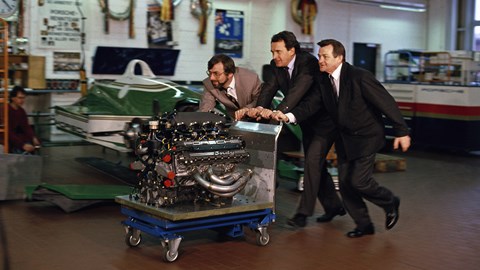
Of the 936 that gave Porsche its fourth Le Mans victory: ‘That car had the problems in ’77. It overheated cylinder number five. Or maybe it was number three [it was three]. It stopped for 45 minutes before the end of the race, but had to go back out again to do the two final laps. The fuel injection and ignition to that cylinder was cut off, it did the laps and then it was the winner.’
Moby Dick
Porsche developed the 935 for Group 5 (which ultimately led to the 935 ‘Baby’ in ’77 and the infamous 935 ‘Moby Dick’ in ‘78) but it was Dr Furhmann who pushed for Porsche to have the 936 for the prototype Group 6 regulations. Few others within the company wanted it, but it won Le Mans in ’76, ’77 and ’81. For this last victory Mezger took his 2.65-litre engine from Porsche’s non-starting IndyCar project (it withdrew before the 1980 season as the organisers insisted it run the same boost levels as the V8s): ‘We rebuilt it to run on gasoline, not methanol, and we took the old 936 and we went to Le Mans and we easily won. And then I think we won five or six times in a row…’
Driving Porsche’s other 935
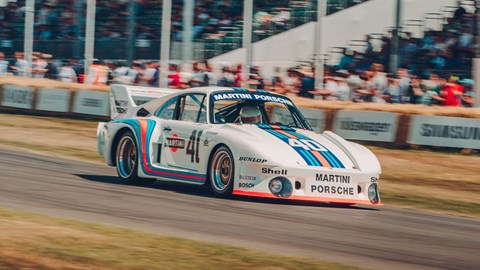
And also the 956
It was six subsequent victories, actually, as his Indy engine went into the back of the Group C 956, and it and its longer-wheelbase 962 successor dominated endurance racing for the rest of the decade. Don’t mistake Mezger’s words for arrogance or nonchalance though – Porsche was now much bigger and while he ceased to look after chassis from ‘82, he remained in charge of the race engine department. But he had another job to keep him busy in the ‘80s.
The Porche 956/962
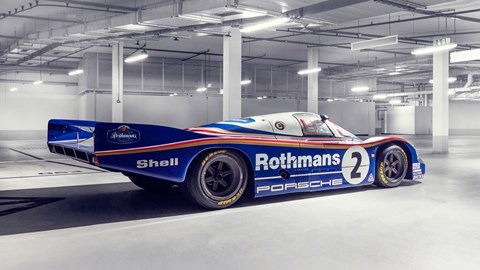
Formula One
‘There was a big project for Porsche – and for me. The Formula One project for McLaren and TAG, which started in ‘81 and went until 1987. Ron Dennis came to Porsche to see if we could develop an engine. I was in that first meeting and it was clear we did not have an engine. The flat engine was not good for F1.’ Dennis asked Porsche to go 50:50 but the company declined, so Ron stumped up the cash for a development study and went in search of more money. ‘It started with one person , then two, and so on, slowly, with a maximum of six people in Porsche in that Phase 1 study,’ explains Mezger. Ron convinced Mansour Ojjeh and his TAG business to buy into McLaren, the project got the green light, and development of the twin-turbocharged 1.5-litre V6 began with early engines running in a 956. ‘There were some ideas, 100% Porsche ideas, that made it better than anything else. We would have been happy to win two or three grands prix in the first year, but in 1984 we won race number one, race number two, and so on. In that year, our first full season, 12 of the 16 races were won by McLaren and Porsche. It was a new record.’
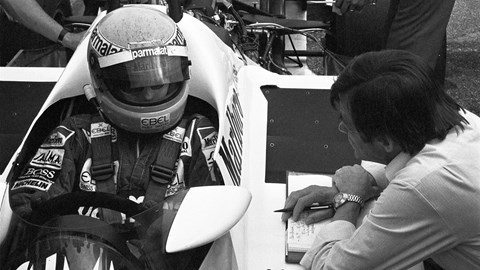
The outing came to an end for political reasons as much as anything else , McLaren asking Porsche for a financial contribution, Porsche refusing, and Honda stepping in. Mezger’s subsequent experiences in Indy and F1 were disappointing, both handicapped by lacklustre chassis, yet neither has tarnished his enduring legacy.
Such has been his influence that ‘Mezger’ has been the nickname for the engines that continued to power Porsche’s Motorsport models, culminating in 2011’s swansong GT3 RS 4.0. But even though the flat six was derived from the Group C engines that were water-cooled under his charge, he is, of course, too humble to claim a credit. He retired 37 years to the day after joining Porsche. One man, one company, many, many great engines.
A timeline
Type 753 – Preliminary work had been done before Mezger joined, but he finished the 1.5-litre flat eight, which powered Dan Gurney’s Type 804 Formula One car to victory in the 1962 French GP.
Type 901 – Early flat six prototypes had pushrods and a wet sump. Mezger and Piech redesigned new flat six with overhead cams and dry sump. Engines don’t come more significant.
Type 912 – Don’t think of the 4.5-litre 12-pot (later 4.9 & 5.0) as a ‘boxer’, but a 180-deg vee. Drive was taken from the centre of the engine. Le Mans winner in ’70 and ’71.
Type 912 Turbo – At its peak in twin-turbo 5.4-litre guise, it produced 1120bhp, and took Mark Donohue and his famous blue and gold Sunoco-Iiveried 917-30 to the 1973 Can-Am title.
Type 2623 – Porsche-built 1.5-litre twin-turbo V6 was TAG badged and brought McLaren three drivers’ titles and two constructors’ world championships between 1984 and 1986.